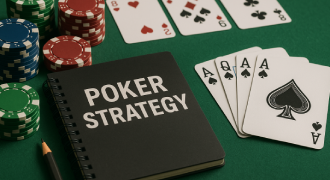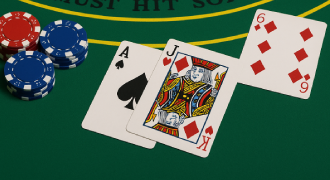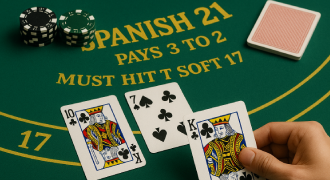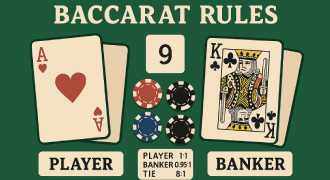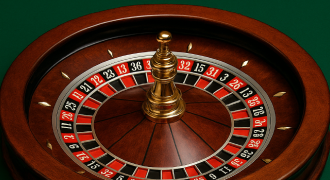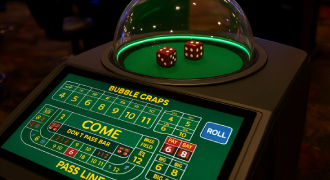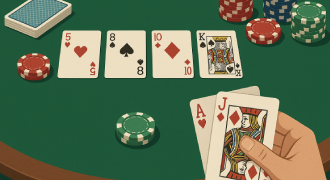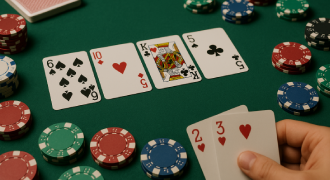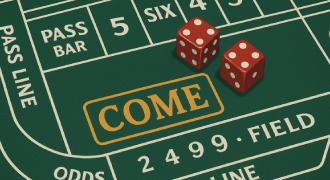Spanish 21 vs Blackjack – Key Differences Explained
Here is a roadmap for those who want to play based on metrics rather than intuition: a comparison of Spanish 21 and classic Blackjack. Both games are similar in terms of technology, but with different settings: in Spanish 21, tens are removed from the deck, but bonuses, liberal doubles, and active surrender are included. This changes the decision flow, pace, and math of the game.
In this guide, we'll break down the rule differences, odds comparison, and real house edge, give practical strategy tips, and show gameplay contrast. By the end, you'll have a clear framework for choosing a table, proper bankroll management, and an understanding of where your winning chances scale faster. We will also check out mobile options and free Spanish 21 vs Blackjack demos.
Intro: Two Great Games, One Big Choice
Two table titans compete for your chips, attention, and long-run ROI: Spanish 21 and classic Blackjack. On paper they share DNA—cards, bets, and a race to twenty-one—but under the hood they run very different engines. The missing tens, liberal doubles, and juicy bonuses reshape risk, speed, and decision trees. This quick, senior-level game comparison gives you rule differences, odds profile, edge math realities, and strategy tips so you can choose the right variant for your playbook. Decide.
Where Spanish 21 and Classic Blackjack Overlap
Both games use standard ranking, aim for 21 without busting, and settle bets after dealer draw—clean gameplay contrast with familiar cadence. Players hit, stand, double, and split; Blackjacks pay premium, and insurance remains the same side bet. You still manage bankroll, table minimums, and seat selection to maximize winning chances. In short, this is a practical game comparison across popular variants that share a common core.
- Objective: Make 21 or beat the dealer without busting.
- Shared actions: Hit, Stand, Double, Split.
- Card values: Aces count as 1 or 11; face cards as 10.
- Settlement flow: Dealer acts last, then pays/collects.
- Table rhythms: Similar betting rounds and chip handling.
Big Differences That Impact Your Strategy
Here’s where Spanish 21 vs Blackjack matchup becomes tangible in the decision tree. Spanish 21 removes all tens, but backfills with powerful bonuses and permissive doubles. Many casinos tweak dealer hits on soft 17 and late surrender access—material rule differences that shape edge and volatility. Lock in on the sections below for concrete strategy tips and the matchup odds that matter.
|
Topic |
Classic Blackjack |
Spanish 21 |
|
Deck structure |
52-card decks with tens |
48-card “Spanish” decks (no tens) |
|
Dealer on soft 17 |
H17 or S17 (property dependent) |
Often hits soft 17 (H17) |
|
Player 21 vs dealer 21 |
Push |
Player 21 always wins |
|
Doubles |
Usually on any first two |
Liberal: after splits, on many cards |
|
Surrender |
Late surrender sometimes |
Late surrender widely offered |
|
Bonuses |
Rare |
Multiple 21 and 6-7-8/7-7-7 bonuses |
|
Resplit Aces |
Often limited |
Frequently allowed (check table placard) |
Deck Count: What You’re Working With
Casinos usually spread four to eight decks in both games, but Spanish 21 trims each deck to 48 cards. That structural cut removes sixteen tens in an eight-deck shoe, changing card density and flow. Fewer tens reduce dealer pat-hand frequency but also lower your natural rate, so bet sizing needs discipline. Treat this as regular Blackjack vs Spanish 21 inventory management, not superstition.
Why Tens Are Missing in Spanish 21
The Spanish pack removes the 10-pip cards to balance generous player-friendly perks. This change makes naturals rarer, yet the variant refunds value through bonus payouts and flexible doubles. Because tens are absent, composition-dependent plays matter more, especially in multi-card totals. If someone asks what this comparison is, start with “no tens in the shoe, but more ways to win.”
Dealer Behavior on Soft 17: What to Expect
Dealer-hits-soft-17 (H17) increases house advantage in both formats by nudging the dealer to improve marginal hands. Spanish 21 tables commonly use H17, which slightly widens the gap unless other perks compensate. If your venue offers S17, your baseline improves and volatility dips. Map the placard before you buy in—Spanish 21 rules vs Blackjack can swing EV by meaningful basis points.
Payout Differences Between the Two Versions
Classic games mostly stick to 3:2 or 6:5 for naturals and standard even-money wins. Spanish 21 layers targeted incentives: player 21 always wins, and specific 6-7-8 and 7-7-7 combos pay premiums, sometimes supercharged when suited. These extras alter expected value on otherwise thin edges. Viewed through Spanish 21 vs Blackjack odds, bonuses offset the missing tens and can outperform tight classic tables.
|
Outcome |
Classic Blackjack |
Spanish 21 |
|
Natural Blackjack |
3:2 (or 6:5 on some tables) |
3:2, plus extra rules still apply |
|
Player 21 vs Dealer 21 |
Push |
Player 21 wins |
|
6-7-8 mixed |
Even-money |
Bonus payout (table posted) |
|
7-7-7 suited |
Even-money |
Large bonus (table posted) |
|
Five-card 21 |
Even-money |
Bonus payout (table posted) |
Surrender and Resplit Options Explained
Late surrender lets you forfeit half your bet after seeing the dealer’s up-card; it cuts losses on negative-EV spots. Spanish 21 usually supports late surrender more broadly and allows resplitting including Aces at many tables. Both levers reduce variance and trim the edge when used correctly. That’s why the matchup odds can look closer than the deck math suggests.
Who Has the Edge? Comparing House Odds
Numbers matter. In favorable classic rules (S17, DAS, resplit Aces, no 6:5), the house edge can fall under one percent with basic strategy. Spanish 21 posts a similar range but slides up or down depending on bonuses, H17/S17, and surrender access. The headline: Spanish 21 vs Blackjack house edge depends on the full rule set, not a single lever.
House Edge in Regular Blackjack
Well-tuned classic games hover around 0.3%–0.6% with strong rules and perfect play; harsh 6:5 tables spike that above 1.5%. Deck count and penetration nudge these figures, but S17 consistently helps players. Misplays compound fast, so keep deviations tight and avoid side bets that drag EV. For matchup odds at scale, model the table before committing volume.
Edge Range in Spanish 21 Games
Spanish 21 commonly lands around 0.4%–0.8% with liberal doubles and robust bonuses under H17; S17 trims it further. The always-wins-on-21 rule eliminates pushes and quietly boosts realized return. Penetration and bonus schedules push the needle more than deck count alone. Framed as an apples-to-apples odds comparison, the race is close when payouts are generous.
How Rules Tip the Advantage One Way or Another
Every toggle—H17/S17, surrender, double-after-split, resplit Aces—shifts expected value by basis points that add up across shoes. Spanish 21’s bonuses act like targeted EV coupons that pay only in defined states, so strategy must chase them without over-exposing to variance. Classic tables with 6:5 naturals lose competitiveness immediately. That’s the operational heart of Spanish 21 vs. Blackjack in real venues.
Bonus Payouts in Spanish 21: The Full Breakdown
Spanish 21 publishes exact bonus ladders on the felt; memorize them before first bet. Premiums for five-card 21s, 6-7-8s, and 7-7-7s—especially suited—create tactical detours where you hit longer. These levers turn marginal hands into profit centers and change your winning chances distribution. Use the schedule below as a reference template; actual numbers vary by casino.
|
Hand |
Typical Bonus (Illustrative) |
|
Five-card 21 |
3:2 or similar bonus |
|
Six-card 21 |
Higher tier bonus |
|
Seven-card 21 |
Highest tier bonus |
|
6-7-8 mixed |
Set bonus payout |
|
6-7-8 suited |
Higher bonus |
|
7-7-7 mixed |
Bigger bonus |
|
7-7-7 suited |
Top-tier bonus; extra if dealer shows 7 |
Strategy Tweaks You’ll Need for Spanish 21
Strategy shifts because card density and payouts change targets. Remove some borderline stands and chase multi-card 21s when the bonus jump justifies the extra hit. Double more often against weak dealer cards, particularly on soft hands, because liberal rules raise the ceiling. Treat this as a gameplay contrast exercise: small pivots, measurable impact.
Hit or Stand? Situational Moves
On hard 12 versus dealer 2 or 3, leaning to hit in Spanish 21 pays long-run because pushes vanish on 21. Soft 18 versus dealer 9 or 10 trends toward hit in the bonus-friendly ladder, especially when chasing five-card 21 equity. Multi-card totals deserve more patience; a fourth or fifth card can unlock a bonus you don’t get in classic. In balancing Spanish 21 vs Blackjack strategy, prioritize lines that touch bonus states.
Double Down Adjustments That Matter
Soft 13–18 doubles against weak up-cards pick up EV in Spanish 21 due to generous double rules. Doubling after splits becomes standard operating procedure when allowed, particularly with soft hands and small pairs. Composition matters: fewer tens mean you weight draws differently, so run the math across more ranks. Those micro-optimizations compound into a clearer edge in this game comparison.
Know the Bonus Scenarios Before You Sit Down
Map the exact Spanish 21 vs Blackjack payouts for 6-7-8 and 7-7-7, and note whether suited triggers add multipliers. Identify thresholds for five-, six-, and seven-card 21s so you know when to extend risk. Track whether special jackpots exist when the dealer shows a Seven; some rooms offer headline bonuses. Before debating matchup odds, confirm the bonus policy so you can plan precise routes.
Double Down vs Surrender: A Rules Showdown
When both Spanish 21 vs Blackjack are available, EV usually prefers a disciplined double over a late surrender in positive or neutral spots. Surrender shines only on deeply negative matchups, especially hard 16 versus dealer Ten, where it cuts losses. Spanish 21’s broader surrender window pairs well with liberal doubles to smooth variance. This is the crux of the rule differences in operational play.
Operational Contrast
|
Situation |
Better In Classic |
Better In Spanish 21 |
|
Hard 16 vs 10 (no bonus path) |
Surrender |
Surrender (more tables allow it) |
|
Soft doubles after split |
Often restricted |
Commonly allowed; higher EV |
|
Multi-card 21 potential |
Rare bonuses |
Frequent bonuses justify extra hits |
|
Player 21 vs Dealer 21 |
Push risk |
Player 21 wins—material swing |
Which Game Gives You the Better Shot?
Start with a rules-first decision matrix, not vibes. If your only option is a 6:5 Classic Blackjack table, pivot to Spanish 21 with a robust bonus schedule—the risk-adjusted return typically clears that weak classic payout. When you locate S17 Classic with DAS (Double After Split) and resplit Aces, the odds comparison compresses and can flip, especially at deeper penetration. Treat this as a hard-nosed game comparison: read the placard, model the house edge, and align bet sizing with variance tolerance and session objectives.
Operationalize the choice with a simple checklist: payout on naturals (3:2 vs 6:5), H17/S17 policy, surrender access, post-split doubles, and posted bonus grid. Price the impact of “player 21 always wins” in Spanish 21 against the missing tens and your own error rate. Use conservative spreads until you validate the observed winning chances over several shoes. That’s the pragmatic way to adjudicate odds Spanish 21 vs Blackjack without superstition.
Mobile & Free Version Options
Spin up mobile demos to A/B test rule differences and speed—most lobbies host both popular variants in free and real-money modes. Validate the bonus ladder, confirm H17/S17, and rehearse surrender timing before risking capital. Log outcomes by scenario (e.g., soft 18 vs 9, multi-card 21 chases) to surface actionable strategy tips. For color commentary, skim Spanish 21 vs Blackjack Reddit discussions, but treat anecdotes as lightweight signals, not ground truth.
Turn your phone into a micro-lab: record 200+ demo hands per rule set, export hand histories, and compute session EV deltas in a spreadsheet. Track misplays by bucket (doubles, soft hands, splits) and close the loop with targeted drills. Calibrate bet ramps only after your practice data stabilizes under each variant’s cadence and gameplay contrast. This discipline converts free-play reps into paid performance on live tables.
Which Blackjack Version Reigns Supreme?
Pick Spanish 21 when bonuses are generous, surrender is live, and doubles stay liberal—those toggles tilt the house edge toward you. Pick classic tables when they pay 3:2, use S17, and allow DAS with resplit Aces—those fundamentals protect EV. Real winners audit rules first and only then scale action. That’s the only defensible answer to what is Spanish 21 vs Blackjack in real-world terms.
FAQ
Is Spanish 21 more player-friendly than classic Blackjack?
Often yes, when bonuses, surrender, and doubles align under reasonable H17/S17 rules.
Which game offers better payout odds overall?
It depends on the exact table; compare Spanish 21 odds vs Blackjack settings before you buy in.
Do Spanish 21 bonuses give you a real edge?
They offset missing tens and can outperform weak classic rules when executed correctly.
Can I use the same strategy for both games?
No; adjust for bonuses, H17/S17, and different card density to avoid EV leaks.
Where can I play Spanish 21 online?
Most major lobbies host it; review posted rules and the edge math before committing play.
Which game is more exciting or fast-paced?
Spanish 21 feels faster due to bonus chases and liberal doubles, while classic is steadier.

